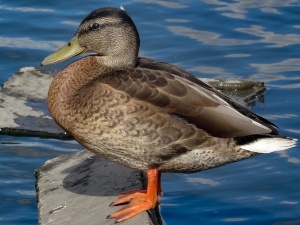
Change is good, but also, change is inevitable. Organisms are changing all the time, our bodies change to suit the environment around us and they also change as we age.
If your duck has suddenly changed color you’d be right to wonder why. This article explores why your duck may have changed color
Table of Contents
Why do ducks change color?
Ducks change the color of their wings throughout their lives, this is done for good reason as their environment and their age necessitates it.
The bird’s feathers don’t change color per se, the feathers fall off during a molt and new feathers of different color emerge, this is why this happens:
Adult features growing in:
Ducklings look very different from adult ducks, these young birds hatch and then grow bright yellow feathers, and these feathers are very light and airy.
Ducklings are yellow, and this makes them look much different than adult ducks, looking different o the adults is important because this makes the parents want to care for the ducklings.
If young ducklings were the same color as the adult birds then the parent birds would drive them away and not want to take care of them
Unfortunately, these light and airy feathers don’t do much to help the bird stay waterproof. Ducks are made waterproof by the oil from the preen gland which is spread over their feathers during preening.
Ducklings can’t do this so their mothers do the preening for them to waterproof their feathers.
Once the bird is of age, the bird will molt and will start to grow larger feathers, the same feathers that adult ducks have. The birds change from having duckling feathers to having adult feathers in order to be waterproof.
The bird’s new feathers, after their first molt, will start to look more like their mother or father.
Damaged feather follicles:
The feather follicle health of a bird will affect how healthy, colored, and bright your bird’s feathers look.
The term is called bleaching but it doesn’t mean that the sun or anything else has bleached the bird’s feathers, it rather means that the bird has damaged feather follicles and these caused the bird’s feathers to grow in white after a molt
The bird’s feathers may not all come out white after a molt, but the feathers may start to grow out with patches of white after a molt, or, in extreme cases, a naturally black duck will start to look like it has a white base and has black spots on its feathers.
Feather follicles can become damaged during mating. Some feather follicles may be torn out or damaged by the males during mating. You’ll know whose mate was overzealous once the female bird molts
Old age:
Just as with humans, ducks will show signs of aging, this includes feathers growing in white after a molt.
The bird’s feathers may start off going grey and they may then advance to going white. This is easier to see in dark ducks than in white ducks
The bird may even show signs of a color change in its skin, an example of this is white pigment developing on the skin around the bird’s eyes as the bird ages.
This is actually a good sign and means that the birds lived to a ripe old age for ducks. Unfortunately, it may also mean that your bird is close to death.
Making sure that the bird is kept comparable during this time is the recommended course of action.
If you enjoyed this article then you may also be interested in other chicken related articles. Here are some articles that you may be interested in: Duck Breathing Fast, Duck Sneezing Treatment, Duck Breathing Loud, Duck Bill Colour Change, Duck Breathing Heavy

